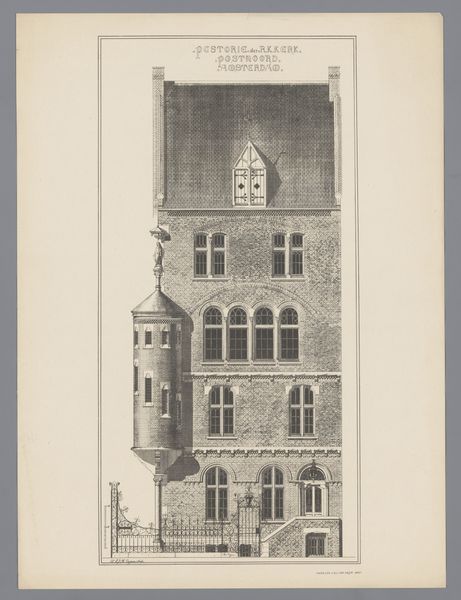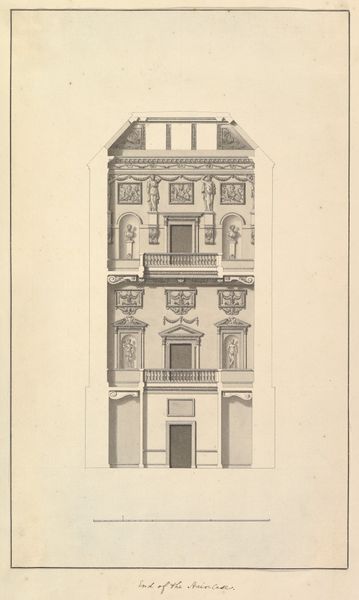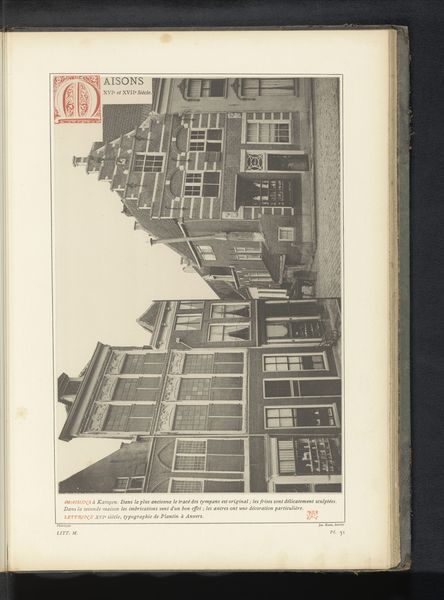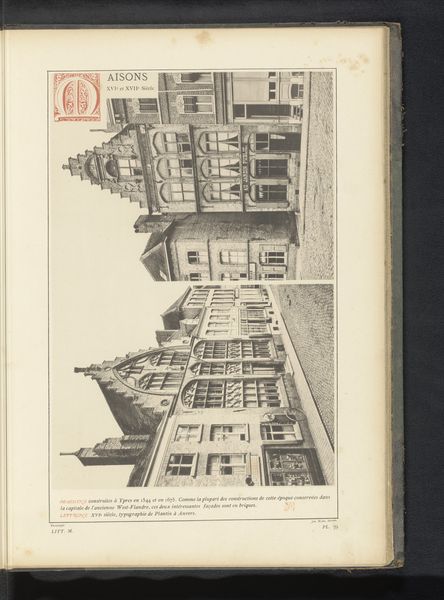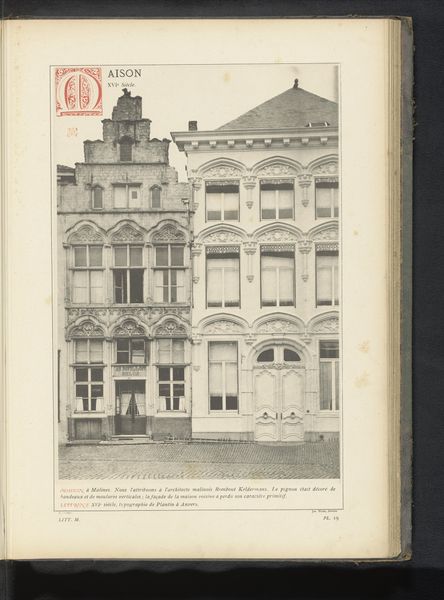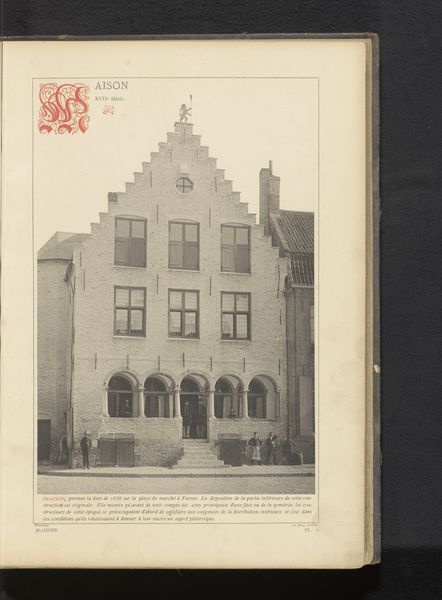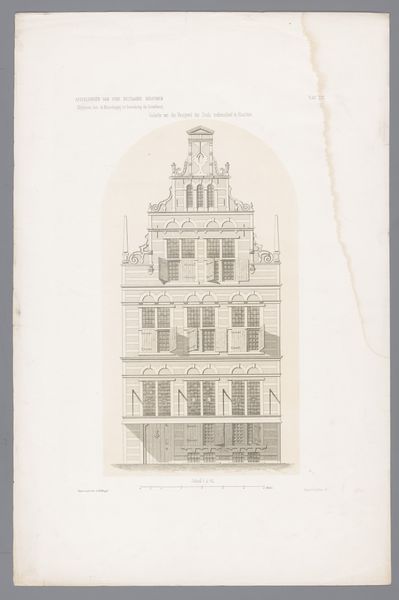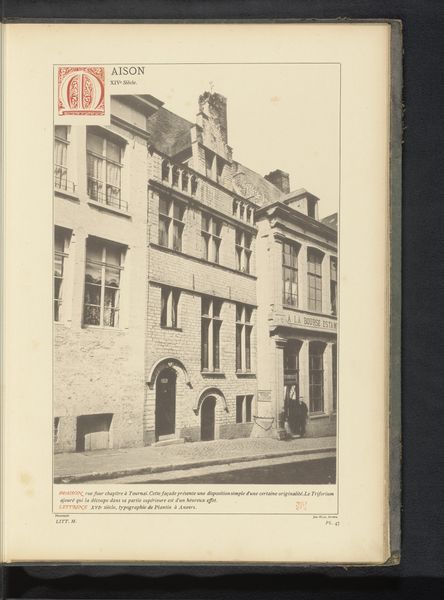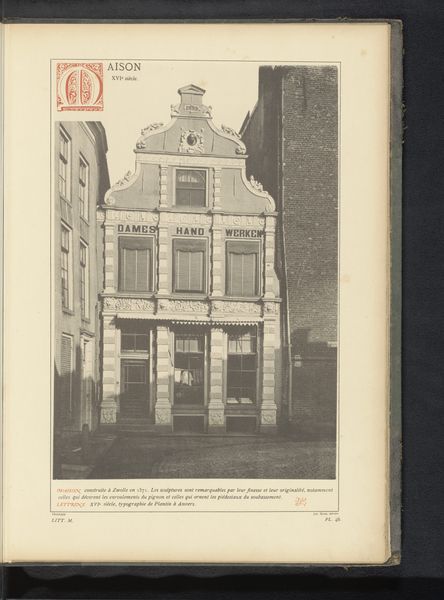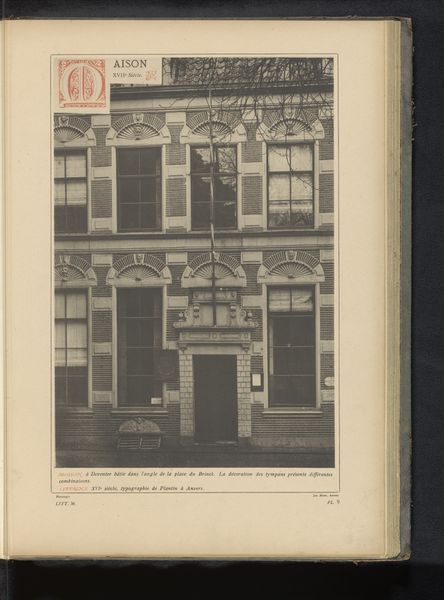
Gezicht op de voorgevel van het administratiegebouw van rijwielfabriek Simplex in Amsterdam 1900
0:00
0:00
drawing, print, paper, ink, architecture
#
drawing
#
art-nouveau
# print
#
paper
#
ink
#
cityscape
#
architecture
Dimensions: height 427 mm, width 331 mm
Copyright: Rijks Museum: Open Domain
Curator: This is a drawing, printed on paper in 1900, titled "Gezicht op de voorgevel van het administratiegebouw van rijwielfabriek Simplex in Amsterdam," or "View of the facade of the administrative building of the Simplex bicycle factory in Amsterdam." Editor: My first impression is one of clarity and meticulous detail, though rendered in such a stark palette. The architectural facade dominates, while supplementary plans and decorative motifs adorn the margins, resembling technical illustrations more than a work evoking emotional response. Curator: It's fascinating to view it through a historical lens. Notice how the building becomes a symbol of industrial progress at the turn of the century, reflecting Amsterdam’s burgeoning manufacturing sector and, importantly, how the aesthetic draws from Art Nouveau, popular in Europe during that time. The image isn’t just a facade; it's an emblem of socio-economic dynamism. Editor: Yes, I see the Art Nouveau influence particularly in the font used for "Rijwielfabriek Simplex" and the curvilinear details around the entrance. The rigid symmetry of the facade is softened by those subtle organic flourishes, but structurally, I appreciate how the perspective lines converge, pulling the eye towards an invisible vanishing point, creating a sense of depth. The stark, crisp delineation between light and shadow adds to the almost blueprint-like quality. Curator: Absolutely, the interplay between industry and aesthetics offers commentary on the public role of such enterprises, attempting to position the company Simplex, within a specific societal, urban context. It almost serves as an advertisement. Editor: I agree, the linear precision and balanced composition underscores the ideals of rational design embraced by architectural formalism at that time, aiming to impose order onto an evolving cityscape. Curator: Exactly, an assertion of progress. Considering these historical contexts adds so many more layers of understanding beyond what might be gleaned solely through visual inspection. Editor: Yes, considering my first response and comparing that to your observations about industry and public art is certainly enriching. Thanks to both formalist and historical lenses, we begin to understand how meaning and beauty intertwine.
Comments
No comments
Be the first to comment and join the conversation on the ultimate creative platform.
